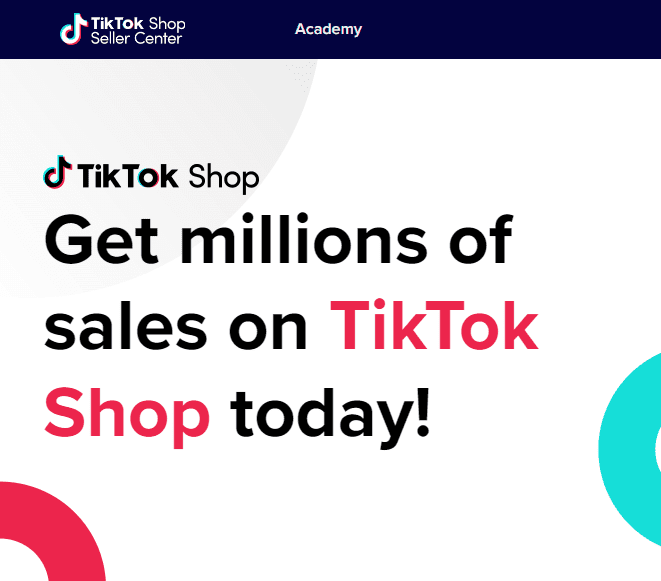The TikTokpocalypse
Everyone wants to know how to make money on TikTok.
Nobody’s asking how TikTok makes money.
For budding startup founders, we think that’s way more intriguing.
In a world saturated with apps, TikTok exploded into popularity.
Launched in 2016, it now has over one billion users.
Everyone and their grandma has heard of TikTok.
If you spend time online, you’ll have seen some of the phenomenal content that comes out of the social media platform. Real gems, such as:
Using superglue as hair gel
@im_d_ollady Stiff where????? Ma hair 🤬🤬
♬ original sound – Tessica Brown
And dropping coins on plugged-in sockets:
Guess how long the average TikTok user spends browsing the app per day.
One and a half hours.
Globally, TikTok users watch 167 million hours of videos every Internet minute.
It made $4.6 billion last year and is projected to earn $12 billion in revenue by the end of 2022.
Yes, safe to say TikTok is making bank.
We admit we don’t think too highly of their content per se, but we find TikTok’s business model brilliant.
What TikTok’s Business Model can Teach Founders
Let’s say you want to create a mobile app, and your main (or only) goal is to make money.
You don’t care about education or saving the whales,
Just money.
Well then, TikTok is a great study.
But first, a quick test to see if you still have a conscience:

Were you seized by a sudden overwhelming passion to save the world?
No?
Still just want to roll around in money?
Excellent. Here’s an overview of the TikTok ecosystem:

There are two parts to this article.
Part one covers methods TikTok uses to monetize its viewership.
Part two covers UX features TikTok has to generate that viewership in the first place.
Let’s get to it.
TikTok Business Model Part One: Monetization Methods
1. Ads
You saw this coming a mile away. If you get traffic, you’ll get advertisers.
And TikTok has traffic.
Now, as for the ads themselves, TikTok has all the usual kinds of ads you’d see on other video streaming platforms.
The ones that pop up before, during, and in between videos, of various lengths and duration.
Of course, they’re targeted based on your viewing habits and demographic information.
Beyond that, TikTok also has some pretty novel ad formats.
Brand Takeover
A brand gets to blast you with an ad the moment you open TikTok.
TikTok charges $50,000 per day but they also guarantee 5 million impressions, which comes to $10 per impression.
Users only have to go through one brand takeover per day and it’s when they’re still fresh.
TikTok is happy, the advertiser is happy, and users are, crucially, not unhappy.
Brand Hashtag Challenges
These are really something special.
When Samsung wanted to promote their new phone, they basically created a marketing audio track disguised as a song.
Then they got the world-famous Kpop band BlackPink to dance to it and challenged users to make their own versions.
Doesn’t that make you just fall in love with the super hot sexy sensual mouth-watering and seductive curves on a Samsung phone?
For a minimum spend of $150,000 and another $100,000 for a week of promotion, brands can create their own challenge with a custom hashtag, which TikTok then heavily promotes.
Branded effects
TikTok provides branded stickers, video filters, and lenses to add to their videos.
Here’s a particularly engaging version sponsored by Totino’s Pizza Rolls.
@yinkatp I may not be an athlete but my pizza roll game is strong #augmentedreality #gamifiedbrandedeffect @totinos Let’s see who can get a higher score
♬ original sound –
You might be watching a makeup video and suddenly the lady in it has two Coca cola circles on her cheeks.
Maybe Pepsi instead of lips.
Mountain Dew instead of eyelashes.
For about $45,000, brands can turn users into visual vending machines for 30-days.
It’s worth noting that TikTok started in 2016 and accumulated 100 million users that year alone. However, they only officially launched ads in 2019.
Could have made money sooner, but they were patient and made more money later.
Also, they turned ads, normally seen as a necessary evil, into something users could look forward to.
It’s a good reminder for founders: focus on adding features that cater to users’ needs, not your own.
2. In-app purchases
Users buy TikTok coins. You get better deals if you buy more in one go,
Because of course, you do
The price fluctuates, but as of this video, it’s about $1 for 100 coins, or about 10 cents a coin.
Users use the coins to buy various gifts which have different coin values.
The gifts are given to content creators, who convert them into diamonds.
Diamonds are converted into real cash again. Each diamond is worth 5 cents, and TikTok takes half of that as a commission.
They double dip in the transaction chain.
3. E-commerce
The last way TikTok milks its cash cows is through its e-commerce feature.
Imagine if Youtube and Lazada had a baby.

Using content like this:
@michiko_kok kok ga mudeng sih… 😇😇 #fyp #usingcloath #kucing
♬ Tiba-Tiba Speed Up – liriklaguツ
Creators can add product tags that then direct interested buyers to an in-app storefront or link out to an external store.
They’ve recently launched this service in Malaysia, Indonesia, The Philippines, and Vietnam, and of course, they’ve been doing it in China for years.
TikTok also lets creators do Live-Stream Shopping where they live stream while promoting products. It’s a concept that’s been really well received in SEA markets.
For now, TikTok only charges a 1% commission to merchants.
For now.
Grab (and tons of brands) did something similar during its early days. Once it convinced enough people to quit their jobs and drive full-time, it hiked the rate up to 25%.
Anyways, that’s it for part one.
Ads, in-app purchases and e-commerce options allow TikTok to make billions off its viewership.
But how does it create such a viewership in the first place?
TikTok Business Model Part Two: Generating Viewership
You’ve seen how TikTok’s got some really cool monetisation methods.
Those methods would be useless without an audience to monetise.
A lot of it is to do with the psychology and insights into user intent and predicting and shaping behaviour. or what developers might call UI/UX features, to achieve their goals.
Well, goal.
Money. Moolah. That sweet sweet de niro.
1. Offering entertainment to a young audience
TikTok’s target audience is pretty clear: young people.
If we look at TikTok’s audience breakdown as o 2022, the numbers are:
421.1 million users aged 18 to 24 (39.8%)
306.7 million users aged 25 to 34 (29.0%)
And keep in mind TikTok only shares data for users aged 18 and above, so the actual number of youths using TikTok is probably a lot higher.
Why target young people?
They are more impressionable and interested in a sense of validation and belonging
They also have worse impulse control and less experience.
Translation: they have more free time to spend doing nothing, and they’re more likely to make purchases based on emotion.
TikTok gives them a platform to be heard and seen by millions. In other words, TikTok has identified a need in its target audience
Tiktok has then been able to deliver a solution that feels effortless to them.
@crownandpawofficial ❤️ What all pet moms want this Valentine’s Day! Last day for 25% off! #crownandpaw #valentinesdaygiftideasforher #valentinesday2022
♬ original sound – Carlie Ann 🐄
Can you imagine showing this to your grandpa? He’d smack the s**t out of you.
Now show it to a million teenagers the week before Valentine’s Day. Very different results.
This is why TikTok can generate over 100 million hours of views every minute, which then translates into lots of ad revenue.
2. Social media-esque features
TikTok lives and dies by user-driven content creation.
It goes to great lengths to support this feature.
It creates group challenges to create trends and aggressively promotes them to users to participate in the hopes that they are seen by millions of other users.
TikTok also makes video content creation really easy,
@mijangggg #duet with @jvke kira-kiranya rap #jvke #meme #fyp
♬ KIRA KIRANYA RAYA RAP – mizanpilus
They provide users with lots of in-app video editing options like filters and video effects to allow anyone to make a decent-looking video.
It also allows interaction with this user-generated content to create a sense of belonging.
TikTok allows commenting and liking videos, but it also allows users to create Duets, which are direct video responses.
3. AI-based content curation
TikTok uses AI to learn two things:
The likelihood of a video going viral, and who to push the video to.
Its first priority is to keep you on the app, so it feeds you content that has broad appeal.
Then it mixes in less popular stuff and monitors which ones you replay and interacts with.
Then it gives you more of that.
You stopped watching?
Okay, let’s try something else.
Did you keep watching?
THEY GOT YOU NOW!

To understand the quality of a video, TikTok analyses the content and then monitors how well it does.
Certain user interactions are given higher scores.
For example, commenting is worth more than liking.
Rewatching is worth more than completing it once.
This way, TikTok uses user-generated data to determine what type of content to engage others with.
It leads to an endless feedback loop of targeted content that is very hard to resist.
4. Instant gratification
Everything about TikTok is designed to make it easy to feel good about yourself. To bombard you with so much dopamine-spiking content that you lose track of time.
- 15-second videos with a setup and punchline.
- Autoplay feeds so you never have to lift a finger, just stare at the screen.
- Lots of content creation support features.
- The opportunity to participate in group activities with millions of others just by dancing.
- The fear of missing out if you don’t participate in group activities.
This is what video games try to do, by the way. It’s why you can spend hours and hours blowing off alien heads and screaming into your microphone.
TikTok Business Model Takeaways for Founders
You probably don’t want to make an app like TikTok, because then you’d be competing with TikTok.
And you’d lose.
But what are some lessons all founders can learn from TikTok’s success?
- Target an audience with a problem
- Focus on providing value to solve that problem
- Make your solution easy to use
- Never stop collecting user feedback and iterating your app
- Collect user data to know your audience as intimately as possible (but always respect privacy laws)
- Prioritise introducing features that solve your audiences’ problems, not yours
- Make sure you have enough funding to see the development process through
That last one is non-negotiable.
Alright, that’s it from us on TikTok. It’s one of the most interesting ideas to hit the market in a long time.
It introduced real disruption and made Facebook and Youtube rethink the way they share content!
It made us lose our faith in humanity, but that’s alright.
It’s worth seeing hordes of 16-year-old skinny kids brag about taking steroids.
Seriously, why is this a thing?
If you enjoyed this article, give us a share on social media, and let us know what other apps you’d like us to cover.








